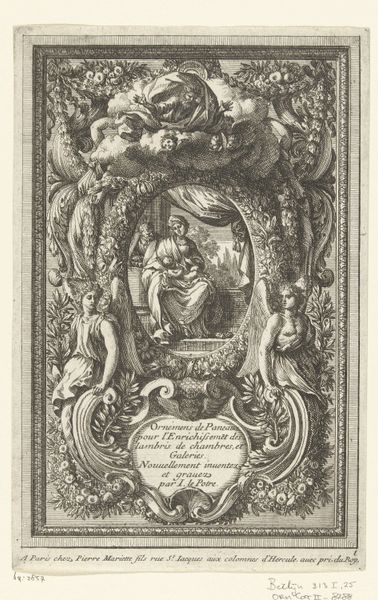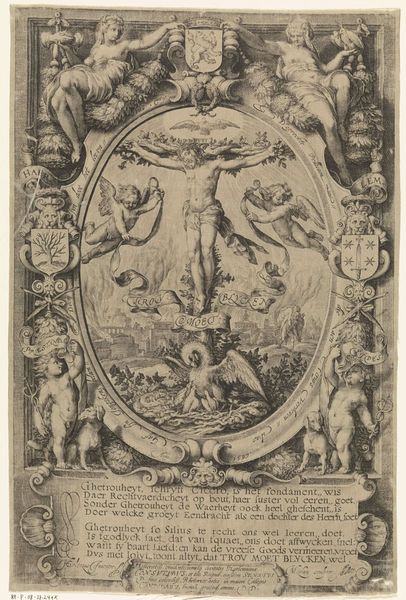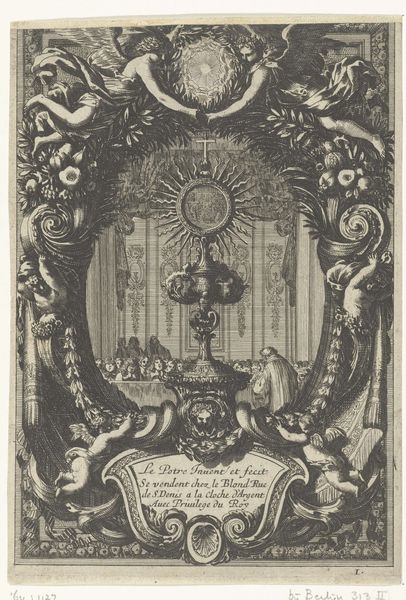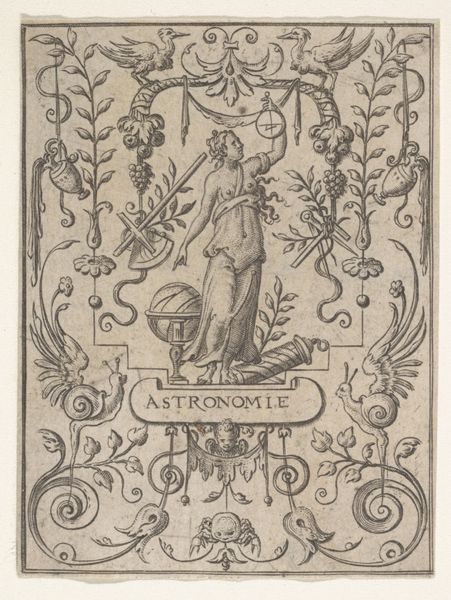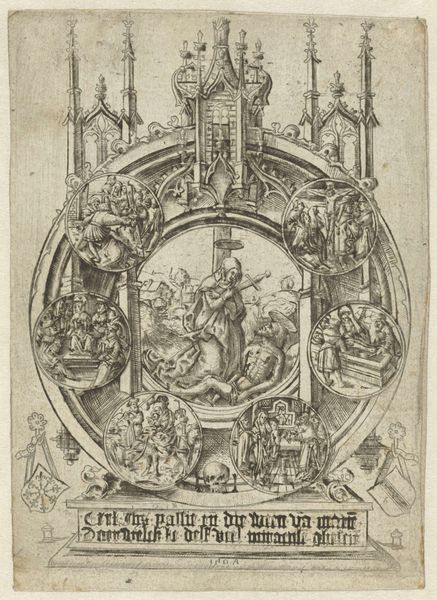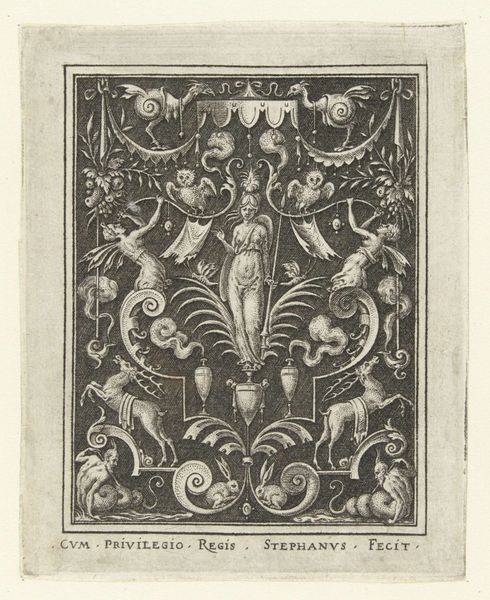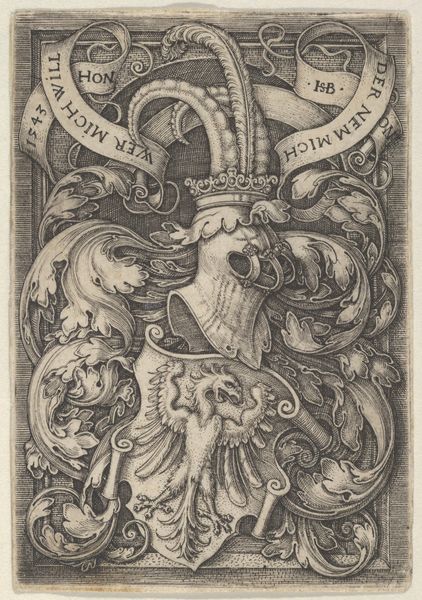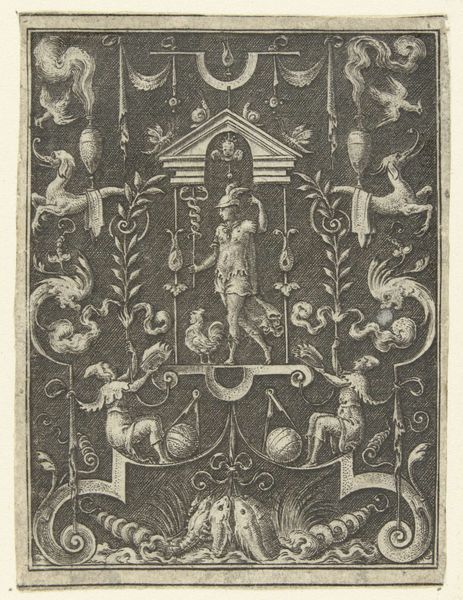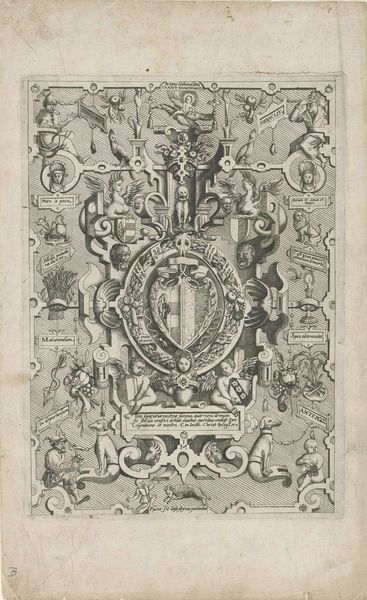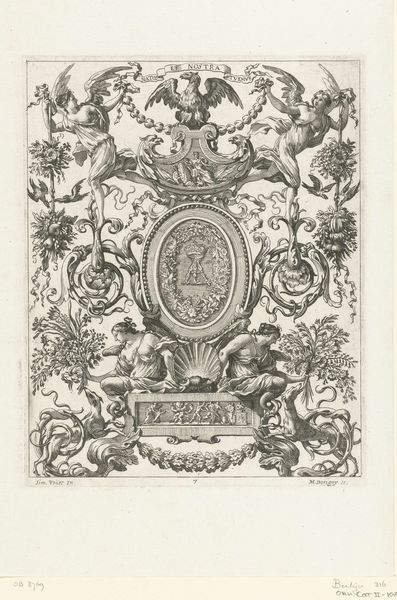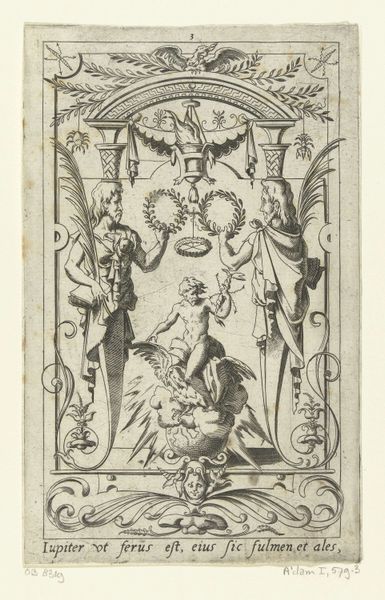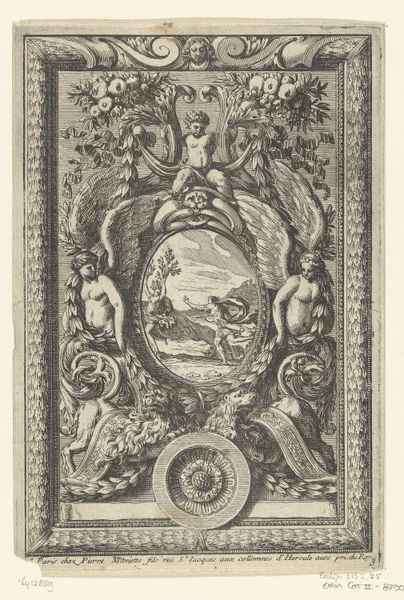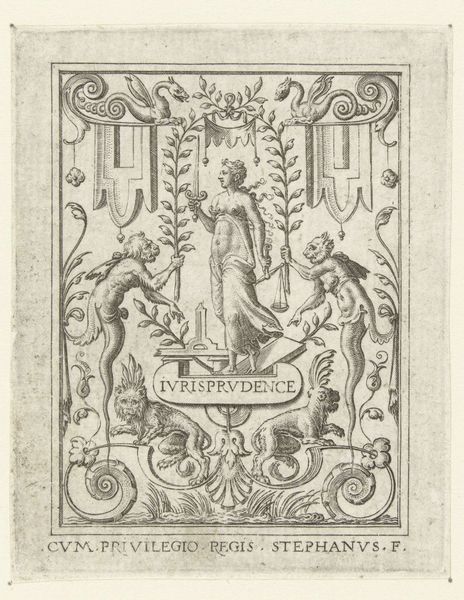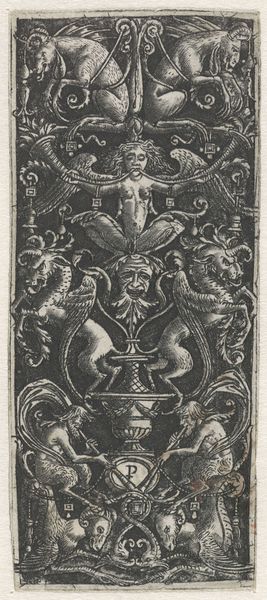
drawing, print, ink, engraving
#
drawing
#
allegory
#
pen drawing
# print
#
pen illustration
#
pen sketch
#
old engraving style
#
mannerism
#
ink
#
engraving
Dimensions: height 318 mm, width 215 mm
Copyright: Rijks Museum: Open Domain
Curator: Let's delve into this engraving, "Medaillon met wapentrofee in ornamentale omlijsting," made in 1559 by Hieronymus Wechinger. Editor: The density of the lines and the intricate details really strike me. What particularly stands out to you in this complex image? Curator: Well, beyond the surface, I’m immediately drawn to the labor involved. Consider the engraver, meticulously carving these lines into the metal. This wasn't just about aesthetic pleasure; it was a commercial transaction, reproducing imagery for consumption. Think about who owned these weapons depicted and, furthermore, who could afford to display an image celebrating martial prowess? Editor: That's a great point; I hadn't considered the labor involved so explicitly. So, the material and the means of production are as important as the image itself? Curator: Precisely. How does the medium—engraving—itself shape the message? The crisp lines and reproducible nature served a specific social function. We see these images circulating among the elite, reinforcing power structures and the valorization of war. Who benefited from that circulation, and what impact did it have on society? The material and the making were not neutral. Editor: It is like a luxury propaganda piece. I am not so fond of this at all. Is there anything redeemable? Curator: The engraving showcases skill, doesn't it? Look at the rendering of the textures of the weapons and armor. A careful assessment of such prints might consider the possibility of repurposing weapons and consider ideas about craftspeople challenging or pushing back against those in power who purchased their labor. But, it's a starting point for interrogating who benefited from this level of craftsmanship and who was excluded. Editor: That's fascinating! Shifting my focus to the material and the conditions of its making completely changed how I see this piece. Curator: Exactly! By considering process, labor, and consumption, we can unearth a much richer and more critical understanding of this historical artwork.
Comments
No comments
Be the first to comment and join the conversation on the ultimate creative platform.
